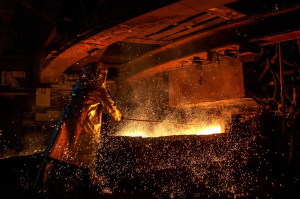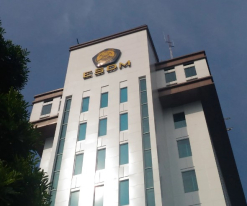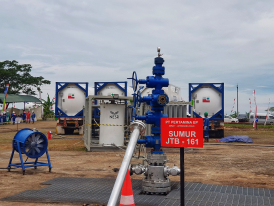ESDM ministry identifies potential lithium, boron deposits in Grobogan
The Ministry of Energy and Mineral Resources (ESDM) has reported potential lithium and boron deposits in various locations in Grobogan, Central Java, following extensive research.
In 2023, a team from the Geological Agency's Center for Mineral, Coal, and Geothermal Resources (PSDMBP) at the ESDM ministry, alongside Eramet, conducted a field visit to Grobogan, Central Java.
The primary objective of this visit was to collect samples for lithium analysis, recognizing the strategic importance of lithium and boron in battery production.
"During the field trip, we collected water and mud samples from five locations: Bledug Kuwu, Bledug Cangkring, Crewek, Jono, and Bledug Kesongo," Agung Pribadi, Head of PSDMB, said in a media statement on Monday, May 20, 2024..
Findings from the field visit
The sample collection at Bledug Kuwu and Bledug Cangkring included water from the mud volcanoes, freshly precipitated water, water precipitated over two days, and residual non-crystallized water.
Upon analysis, water from the Bledug Kuwu mud volcano exhibited lithium concentrations of 103-111 parts per million (ppm) and boron concentrations of 464-534 ppm.
Residual water in the salt mine showed lithium levels of 1,059-1,110 ppm and boron levels of 2,660-2,781 ppm. The lithium content in the mud samples was found to be 115 ppm.
At Bledug Cangkring, the water samples contained 21-49 ppm of lithium and 177-339 ppm of boron. The residual water in the salt mine had lithium levels of 266-612 ppm and boron levels of 1,341-1,928 ppm. The mud samples had a lithium content of 113 ppm.
The water samples from Crewek contained 26-27 ppm of lithium and 165-182 ppm of boron. In Jono, water samples from a community salt mining well showed lithium levels of 4 ppm and boron levels of 163 ppm.
At Bledug Kesongo, the water samples contained 56 ppm of lithium and 17 ppm of boron, while the mud samples had a lithium content of 94 ppm.
Implications and future exploration
Based on these findings, the ESDM ministry believes there is significant potential for new lithium sources. The high lithium concentrations observed have prompted recommendations for further exploration, including geophysical studies.
"The high lithium levels serve as a recommendation for the next phase of investigation, which is exploration with geophysical studies," concluded Agung.
These discoveries underscore the potential for Grobogan to become a significant site for lithium and boron extraction, contributing to Indonesia's strategic mineral resources and supporting the global demand for battery materials.
Tag
Already have an account? Sign In
-
Start reading
Freemium
-
Monthly Subscription
30% OFF$26.03
$37.19/MonthCancel anytime
This offer is open to all new subscribers!
Subscribe now -
Yearly Subscription
33% OFF$228.13
$340.5/YearCancel anytime
This offer is open to all new subscribers!
Subscribe now






